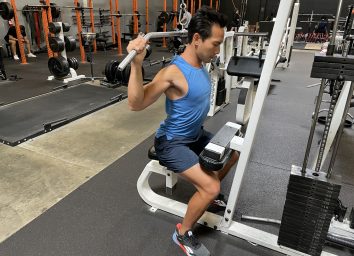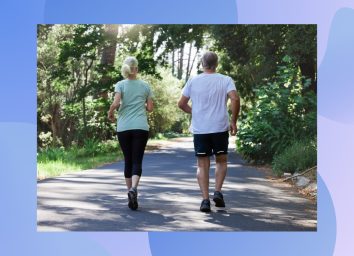The Secret Tricks for Getting a Lean Body After 60, Say Experts
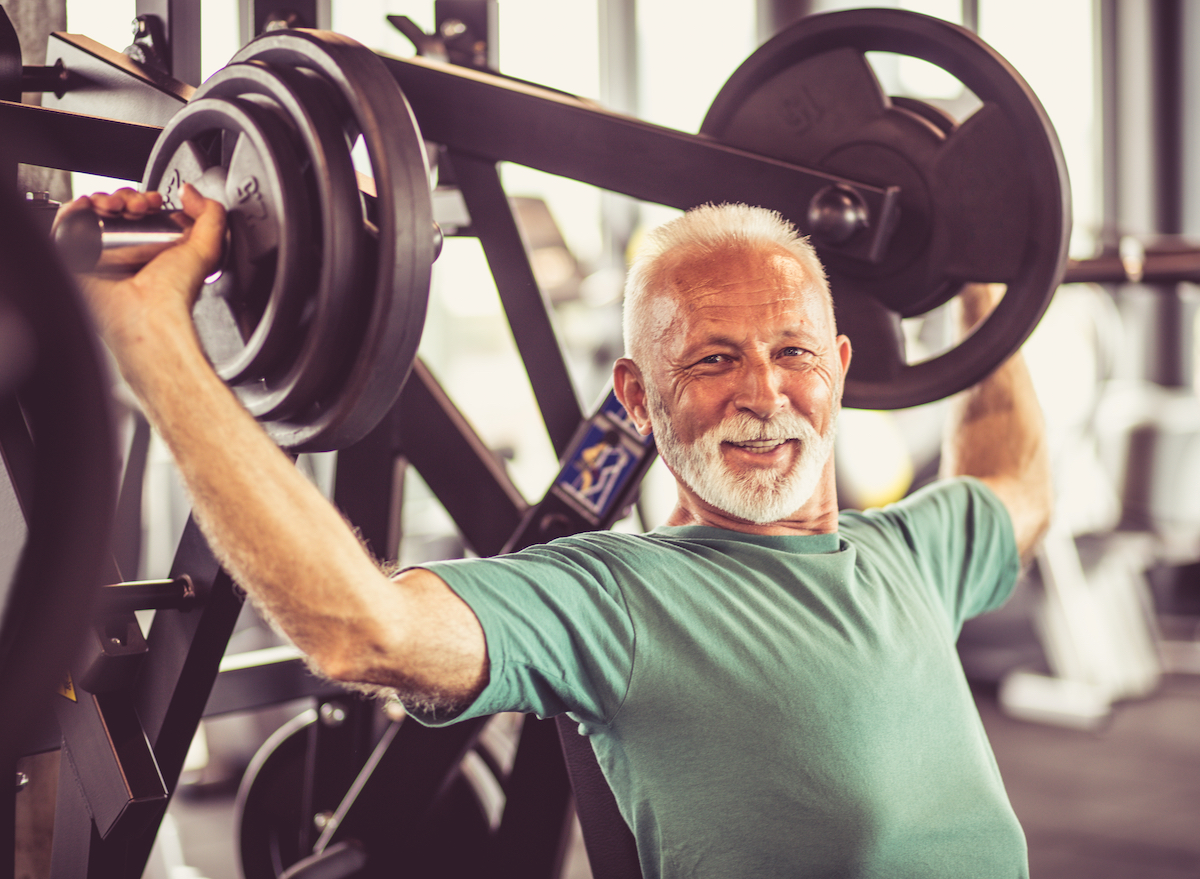
There's no getting around it—as you get older, it becomes progressively harder to run the six miles you used to do each morning. Your strength, balance, and mobility naturally decrease with age, and it's harder for many people to stay strong and manage your weight.
"[As you age] there's a steady increase in fat mass and changes in body composition, as well as an increase in insulin resistance," says Leada Malek, PT, DPT, CSCS. "There are also changes in bone density, joint stiffness, and sometimes posture, and all these factors can contribute to metabolism and muscle mass changes after 60," she adds.
What's more, as you age you often see a reduction in metabolic rate due to the loss of muscle mass. "Your body makeup also starts to shift where what was once muscle turns to fat since you typically stop using your muscles and don't need to maintain them anymore," says Caley Crawford, NASM-CPT, trainer and director of education for Row House. These factors make it harder to lose unwanted weight and maintain a lean body after 60, she says.
Because of these changes, people often feel weaker and less mobile. "This can lead to less motivation to exercise or continue usual activity routines, but many people don't realize that they can still build muscle despite these changes," Malek explains.
Luckily you can combat these issues with some exercise (really!). Here are a few secret tips for building strength and getting a lean body after 60, as well as improving overall fitness and health. And for more fitness tips, don't miss: Over 60? Here Are the Best Abs Exercises You Can Possibly Do, Says Trainer.
Choose activities that mimic everyday life
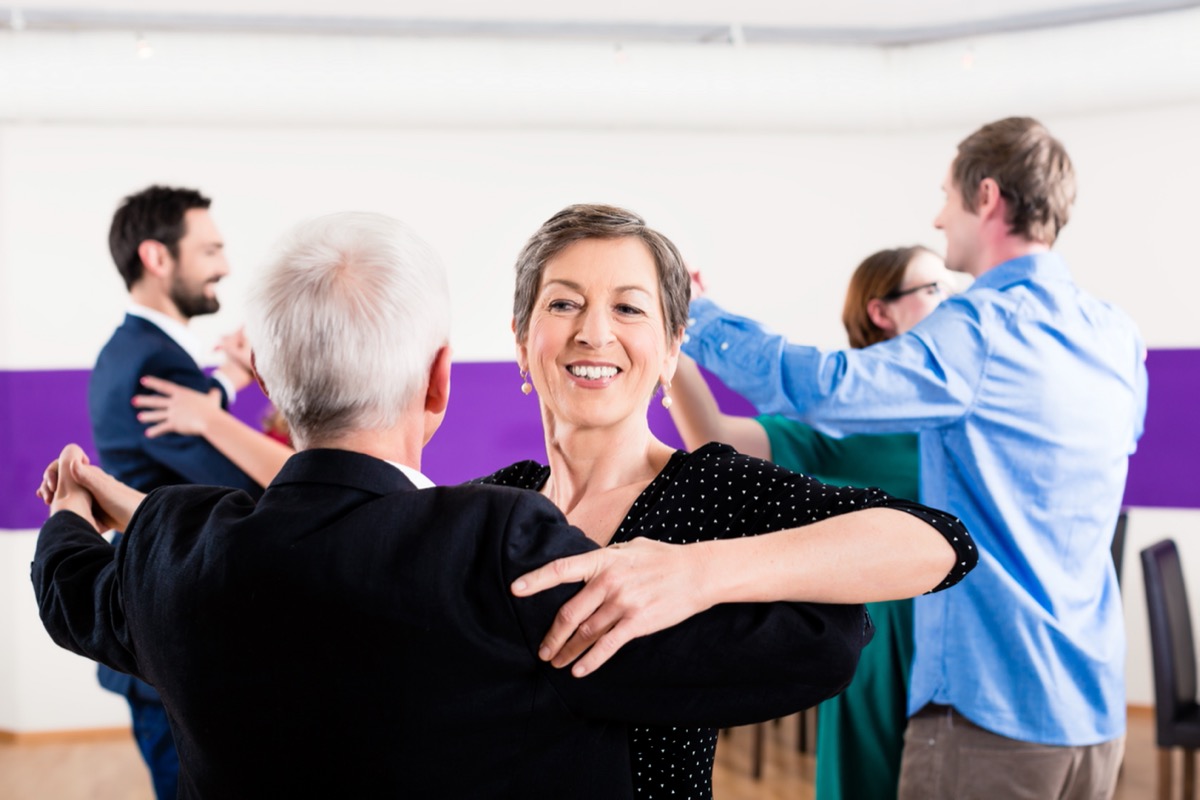
It's important to be able to move around comfortably as things like joint stiffness and sensorimotor control (aka your brain and body's ability to quickly respond to events as they happen in real-time) affect your mobility as you age. "Squats, step ups, balance exercises, even farmer's carries work great to strengthen and improve postural control," says Malek.
These exercises are dynamic and reduce the risk of falls, which can be higher when you're aged 60 and older. And they mimic mundane activities like walking up and down the stairs and sitting in a chair and getting up, for example. Basically, they're exercises that support your day-to-day activities—key to maintaining independence and a better quality of life. For more ideas, check out: One Secret Fitness Trick That Can Add Years to Your Life, Says Top Trainer.
Lift weights to build strength
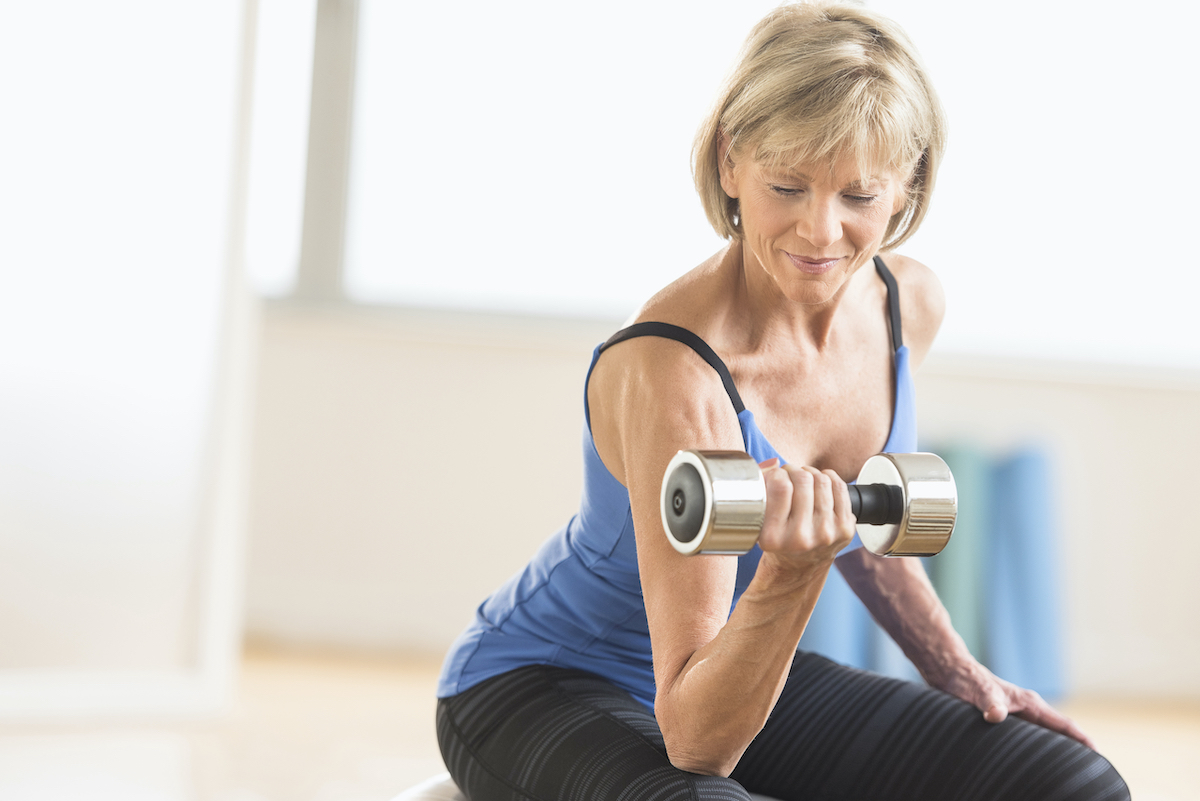
Yes, strength training is important to getting a lean body after 60. "Bone density improves with resistance training and you build muscles, which is needed as you age," says Malek. You want to put enough stress on your body to create change but you don't want to overdo it and hurt your joints, which are more fragile at this age.
"Training at higher intensities yields greater effects than lower/moderate intensities," Malek says. "Aim for 1-3 sets of 10-15 reps at a weight that is challenging but doesn't lead to complete failure to avoid joint stress," she suggests. Working with a coach or personal trainer can help offer guidance and protection too. For more tips, be sure to read: Over 60? Here Are 5 of the Best Exercises You Can Possibly Do.
Target different muscle groups
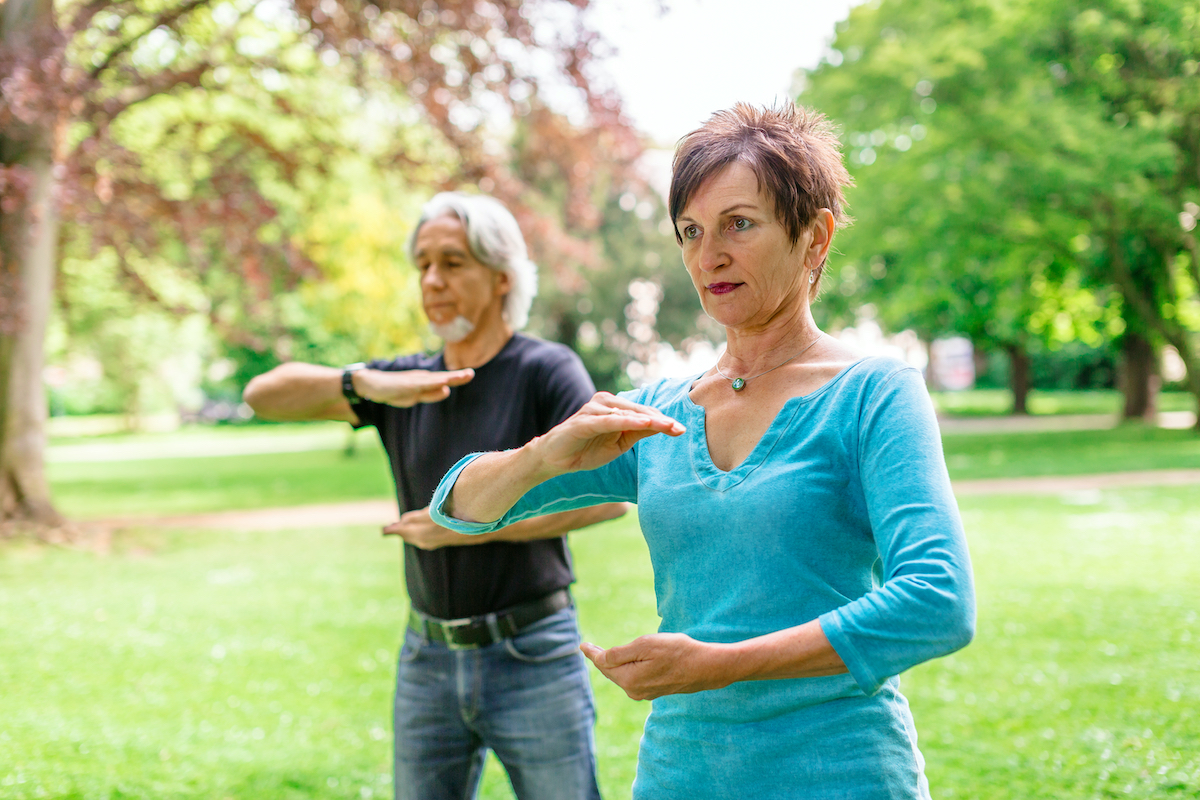
Incorporate a full-body strengthening routine into your exercises, which will improve overall mobility and joint health. "Target major upper back muscles for pulling and pushing motions with the upper extremities, and incorporate multi-joint movements like squats, calf raises, or leg presses," says Malek. These moves encourage functional work and can help with daily movement like moving around the house or picking up groceries at the store.
These kinds of full-body movements are compound, meaning they incorporate multiple large muscle groups at once to build muscle and burn calories faster. "Bodyweight squats and lunges give you more control over your body, and as you get stronger you can add weights," Crawford says. As you build up your strength from compound exercises, you'll also increase your bone mass, which will help prevent further injury and pain.
Schedule workouts during the week
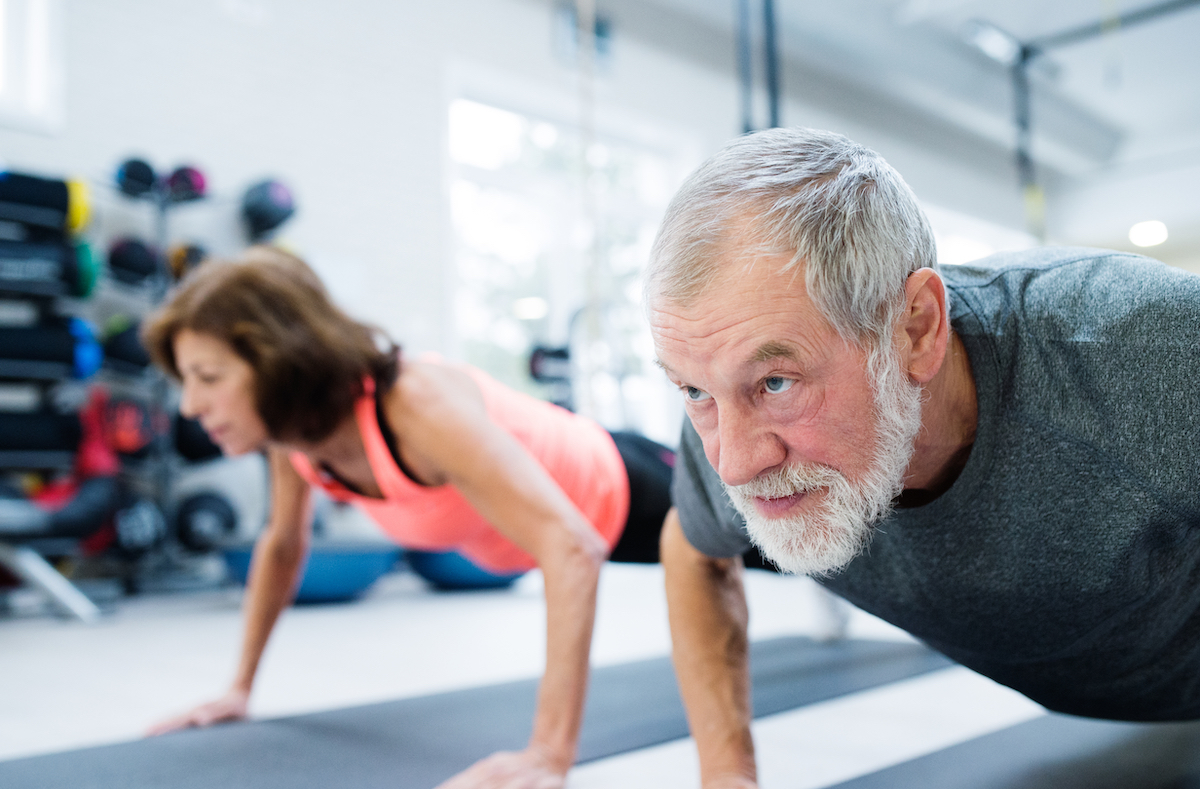
Treat workouts like work meetings, and mark them on the calendar. You must be consistent to see results in toning, since it's naturally harder to define muscle mass and maintain that stamina when you're older.
"Aim for two to four [workouts] per week," Malek says, where you incorporate both some cardio for better heart health and for preventing weight gain, as well as weights to really strengthen muscles. Want some ideas for what to try? Check out Over 60? Here Are Some of the Best Cardio Exercises for You, Says Trainer.
Get walking

"Whether you're new to exercise or have been doing it for years, regular walks will serve their benefits to your toning goals," says Crawford. You're burning additional calories from the movement and engaging muscle you wouldn't be activating while sitting.
Just being mobile, walking more outdoors or around the home or office, will add up and help you get lean in a way that puts less pressure on the joints (which is especially great for those who are 60 and up).
"Walking helps to burn fat and build up your muscles, but if you're someone who battles with severe joint pain, this may not be the best option for you," says Crawford. It'd be best to limit how often you walk and slowly increase the distance as you get stronger or find another form of light cardio. Try swimming, for instance, which doesn't put pressure on the joints. And don't miss The #1 Sign You Need to Walk More, Say Experts.
